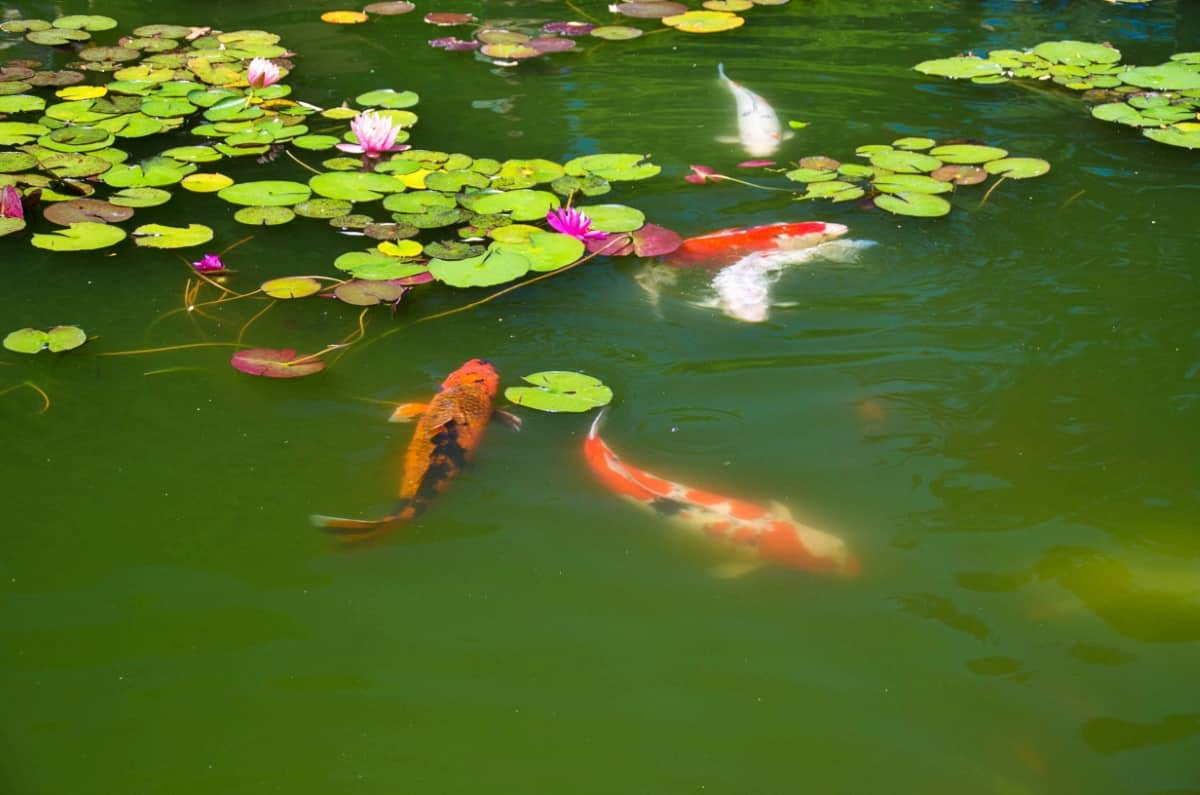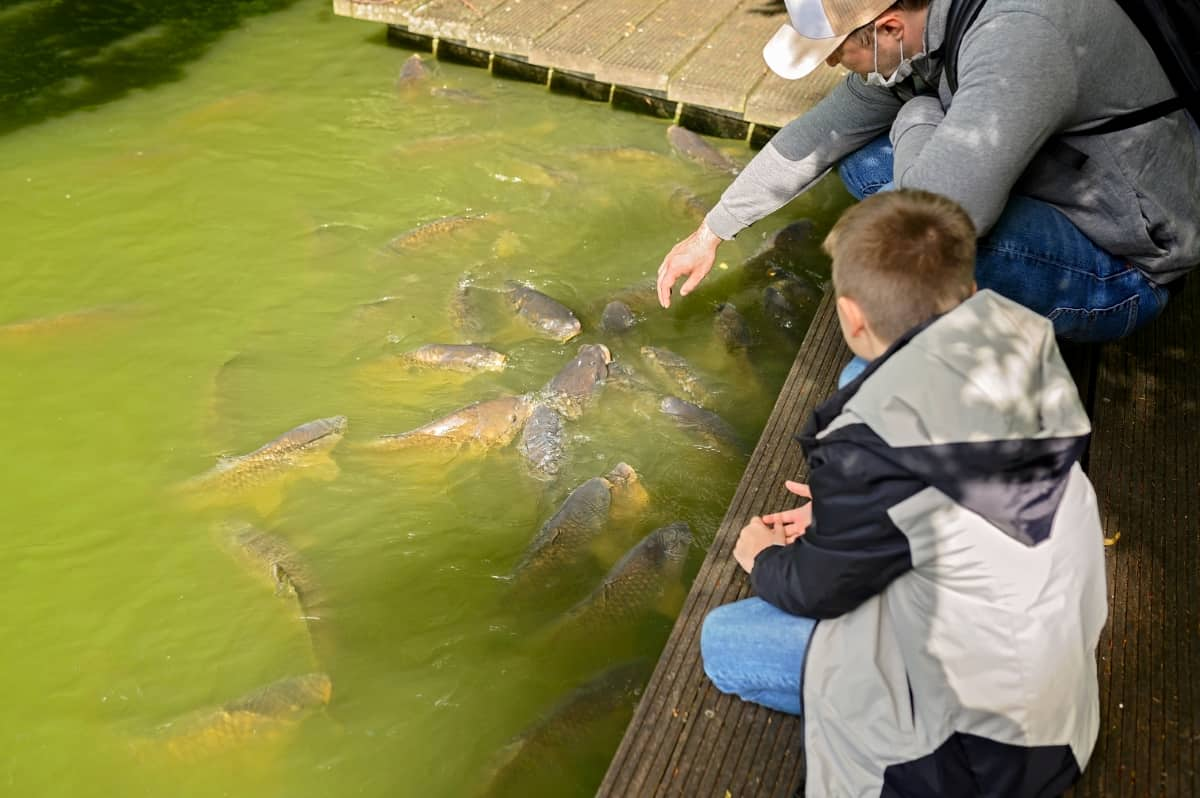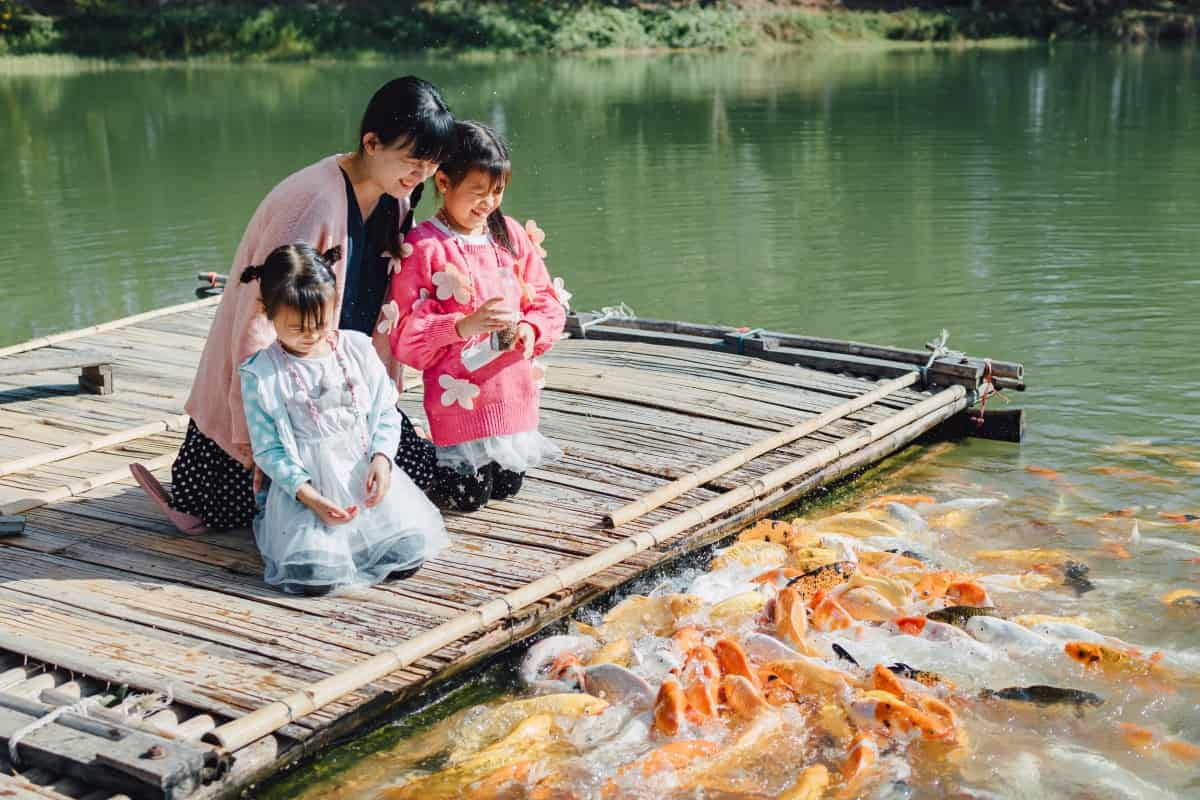Fish farming has enormous potential for financial reward, food security, and sustainability. It represents a significant aquaculture segment, contributing to over 50% of the world’s seafood supply. However, feed production is one of the greatest challenges that impede the successful operation of a fish farm. The quality, quantity, and composition of fish feed can greatly influence a fish farm’s growth, health, and final output.

Moreover, the cost of artificial feed for fish is a substantial part of the operational cost, leading farmers to seek natural alternatives to improve fish feed production. The task then becomes a quest to understand the natural fish feed production methods and their practical applications in increasing the yield of fish ponds. This article explores various natural ways to increase fish feed production in ponds and the importance of fish feed, in addition to shedding light on the methods of feeding fish in a pond and how to calculate fish feed.
Natural Ways to Increase Fish Feed Production in Ponds
The Importance of Natural Fish Feed
Fish feed plays an essential role in the life and growth of fish. It provides the necessary nutrients for survival, growth, reproduction, and disease resistance. This is why feed quality and availability are often key determinants of the success of a fish farm. While useful, traditional artificial feed for fish can sometimes be unsustainable due to its cost and potential environmental impact. Conversely, natural fish feed, consisting of various organic materials in the fish’s natural habitat, can be an excellent, cost-effective, and environmentally friendly alternative.
Natural fish feed includes phytoplankton, zooplankton, insects, worms, and other small aquatic organisms that fish naturally consume in the wild. By encouraging the production of these natural food sources in your fish pond, you can create a self-sustaining, organic environment that can significantly cut down feed costs while boosting the health and growth of your fish. However, producing natural fish feed in sufficient quantities requires some knowledge and application of specific techniques.
Techniques for Increasing Natural Fish Feed Production
There are several natural methods of increasing fish feed production in a pond. One such technique involves using organic fertilizers to boost the production of phytoplankton and zooplankton, the primary food source for many fish species. This can be achieved by applying compost, animal, or green manure to the pond. These fertilizers provide the necessary nutrients for the growth of these microscopic organisms, creating a natural food chain within the pond.
Another technique involves the incorporation of periphyton-based systems. Periphyton, a complex mixture of algae, bacteria, and other microorganisms, is a natural food source for many fish species. Periphyton can be encouraged by adding substrates such as bamboo, branches, or plastic sheets where these organisms can attach and grow. A third technique involves the cultivation of aquatic plants and vegetables.
In case you missed it: Fish Farming Success Story: How This Aqua Farmer Turned into Millionaire

These serve as a direct food source for herbivorous fish species and an indirect source for carnivorous species by attracting insects and other small aquatic animals. Vegetation like duckweed, azolla, and water spinach are excellent choices as they are rich in protein and other essential nutrients and grow rapidly. Finally, farmers can introduce natural predators such as prawns or other types of fish that feed on pests and parasites, thus controlling their population and enhancing the pond’s overall health.
Methods of Feeding Fish in a Pond
Feeding fish in a pond requires careful planning and understanding of the fish species’ nutritional needs and feeding habits. Different species have different feeding habits; some are herbivores, some carnivores, and others omnivores. Furthermore, different species feed at different water levels: some feed on the surface, others in the middle, while others are bottom feeders.
In a natural pond setting, fish can often find their feed through the food chain established in the ecosystem. For instance, phytoplankton is eaten by zooplankton, which is then consumed by smaller fish, which in turn becomes feed for larger fish. Thus, applying organic fertilizers to stimulate the growth of primary producers can naturally cater to the feeding needs of different fish species.
Supplementary feeding can also ensure the fish get all the necessary nutrients. This can involve the addition of farm-produced feeds like rice bran, wheat bran, or vegetable waste. Such feeds should be added in quantities the fish can consume within a few minutes to avoid pollution from the uneaten feed. Understanding the feeding habits of your fish species will guide you in the timing, frequency, and method of feed application.
For example, surface feeders can be fed using floating feeds or directly sprinkling the feed onto the water surface. Mid-water feeders can be catered to by using slow-sinking feeds, while bottom feeders are best served by using sinking feeds or directly placing the feed on the pond bottom.
Fish Feed Calculation
Accurate fish feed calculation is vital to ensure your fish get the right amount of feed. Overfeeding can lead to wastage and pond pollution while underfeeding can stunt fish growth and lower your pond’s productivity. The quantity of feed required by fish can depend on various factors, including the fish species, fish size, water temperature, and feed quality.
Typically, fish are fed a certain percentage of their body weight daily. For example, juvenile fish require more feed, sometimes up to 5% to 10% of their body weight daily, as they are in their active growth stage. Adult fish, on the other hand, require less feed, usually around 1% to 3% of their body weight daily. Therefore, understanding the total biomass of fish in your pond can guide you in determining the amount of feed required.
In case you missed it: How to Tap Fish Pond Water for Irrigation and Nutrient Supply in Agriculture

Moreover, the feeding rate should be adjusted based on observing fish behavior and condition. If there is uneaten feed in the pond after feeding, it indicates that the feeding rate should be reduced. If the fish consume all the feed quickly and appear hungry, the feeding rate may need to be increased.
Conclusion
Fish feed is a critical factor in the success of a fish farm, contributing significantly to the growth, health, and productivity of the fish. While artificial feeds can be effective, they can also be costly and potentially harmful to the environment. Natural fish feed production offers a more sustainable and cost-effective alternative. Techniques to increase natural feed production in ponds include the application of organic fertilizers, the incorporation of periphyton-based systems, the cultivation of aquatic plants and vegetables, and the introduction of natural predators.
Feeding fish in a pond requires understanding the fish species’ nutritional needs and feeding habits, with the need to cater to different feeding levels within the pond. Supplementary feeding can ensure that fish receive all the nutrients they need. Lastly, careful fish feed calculation can ensure that fish are neither underfed nor overfed, optimizing growth while minimizing wastage and pollution. Thus, with careful planning and management, natural fish feed production in ponds can be a successful and sustainable method for fish farming.
- Feed Your Flock for Less: Top 10 Tips to Save on Chicken Feed
- Ultimate Guide to Ossabaw Island Hog: Breeding, Raising, Diet, and Care
- Hatching Answers: The Top 10 Reasons Your Chickens Aren’t Laying Eggs
- Eggs and Economics: Breaking Down the Cost of Raising Backyard Chickens
- Defend Your Greens: Proven Methods to Keep Iguanas Out of Your Garden
- Ultimate Guide to Cinnamon Queen Chicken: A Comprehensive Guide for Beginners
- Ultimate Guide to California Tan Chicken: Breeding, Raising, Diet, Egg-Production and Care
- Ultimate Guide to Marsh Daisy Chicken: Breeding, Raising, Diet, and Care
- 10 Types of Chicken Farming Businesses You Can Start for Profits